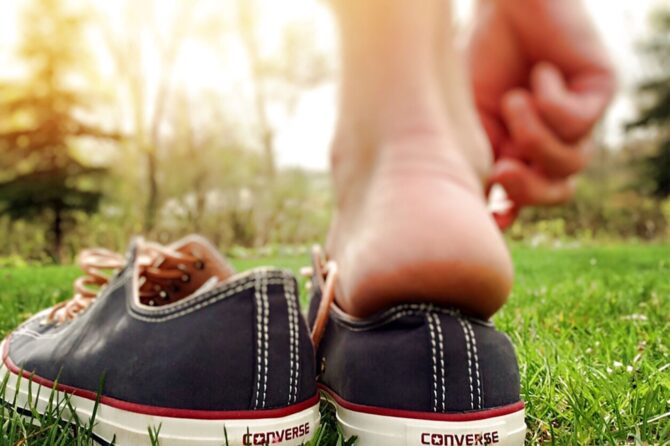
Why Do My Heels Hurt?
September is Heel Pain Month. Almost 80% of Americans are living with some sort of foot issue. And six of every ten of these people experience some form of heel pain as a symptom. So today, let’s explore some of the many causes of heel pain.
Plantar Fasciitis
When the ligament connecting the toes to the heel bone becomes inflamed, damaged, or torn, pain can occur on the underside of the foot near the heel. This pain can be sudden and sharp and usually occurs with your first steps in the morning or after a period of rest.
To diagnose plantar fasciitis, your FAAWC provider will ask questions about your pain and watch you stand and walk. It’s important to get customized treatment (not a generic shoe insert) for plantar fasciitis to truly live without heel pain or risk of further injury.
Stress Fracture
When muscles are unable to absorb the shock of daily activities, energy is transferred to bones, which can result in tiny surface cracks, aka a stress fracture (or microfracture). Heel pain associated with a stress fracture will be significant during activity and subside with rest. There may also be pinpointed pain when you press directly over the fractured area.
Without proper care, a stress fracture may develop into a complete break in the bone, which can require a cast and immobilization. Your FAAWC provider will use X-rays and an MRI to confirm the diagnosis.
Achilles Tendonitis
The Achilles tendon attaches the heel bone to the calf muscle and is critical to the movement of your foot and leg. Overuse and strain on the Achilles can cause painful inflammation in the heel, aka Achilles tendonitis. You may experience discomfort or swelling in the back of your heel or the skin on your heel may be overly warm to the touch.
RICE (rest, ice, compression, elevation) is a good place to start for tendonitis, but if it gets worse, the tendon can become damaged or torn. Your FAAWC provider will ask you a few questions about the pain and swelling in your heel and observe your range of motion and flexibility in action with some simple exercises, all to determine if Achilles tendonitis is the cause of your pain.
Bursitis
Small sacs of fluid (called bursae) positioned throughout the body will occasionally become inflamed, making movement painful across the affected area. This could be minor pain that causes small aches or it could be sudden and sharp. Pain is usually worse when you press on the affected area and you may see redness and swelling.
Repeated minor impact or sudden trauma to the heel can lead to bursitis, both on the bottom and back of your heel. Your FAAWC provider will examine the area and may take fluid from the bursa to check for infection or other causes. These tests help determine if bursitis is the cause of your heel pain.
Pump Bump
Haglund’s deformity (aka Pump Bump) is a physical bump that forms on the back of your heel where the Achilles tendon and the heel bone attach. Heel pain from Haglund’s will occur while wearing certain shoes that rub on the raised area. This can lead to blisters, calluses, and even the additional diagnosis of bursitis.
While shoes may be a contributing factor, high heels are not solely to blame. Haglund’s deformity can happen to anyone. Your FAAWC provider will look at your heels and discuss any contributing risk factors. An X-ray or MRI can help determine the severity of the condition if Haglund’s is the source of your heel pain.
Heel pain has many causes, and a proper diagnosis from a podiatrist is critical to choosing the right treatment plan. Talk to your FAAWC provider today to help rid yourself of heel pain forever. 740.363.4373
Leave a reply